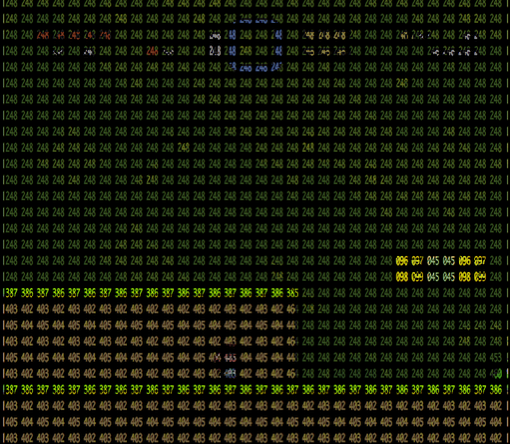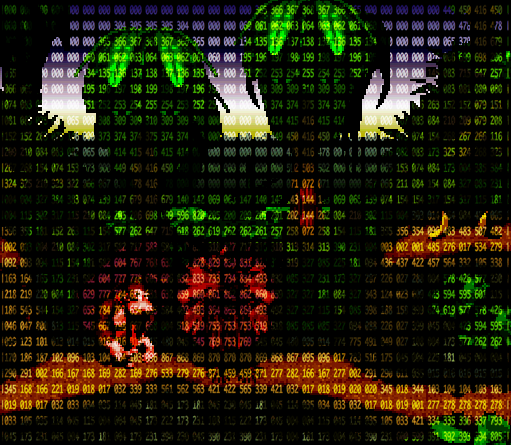2017
Evolution of SNES games (I swear real work is coming out of this)
Super Nintendo Entertainment System games made their backgrounds out of 8x8 pixel (usually) tiles. Have a look at the first level of Super Mario World, superimposed its tilemap:
It’s not super easy to see, but it’s clearly very regular. Walkable parts use tiles 385, 386, and 387. Blocks use tiles 96, 97, 98, and 99. The background is all tile 248 (there is actually a separate tile layer with the hills and things).
By contrast, look at level 1 of Donkey Kong Country:
The walkable portion is all messed up. The walkable ground is made up of tiles, what, 345, 168, 166, 221, 19, 282, 169… and that’s just the ones I looked at quickly in the lower left.
Super Mario World came out in 1990, with the release of the SNES. Donkey Kong Country came out four years later. It seems pretty clear that the tilemap for SMW was made by hand. It seems almost equally clear that the tilemap for DKC was made by a computer. Not obvious here, but quite interesting, is that several tiles are repurposed. For example, there is a tile which is just “noise” — light brown dots on a darker brown background, used as part of the ground. However, that exact same tile, this time using a green palette, also forms part of the forest backdrop.
This has implications for automated game-playing: it’s pretty obvious that you could train a computer to play SMW just by looking at the tilemap, but for DKC there is presumably a separate memory area which stores the walkable path — looking at the tile map doesn’t buy you much over looking at the bitmap itself.


